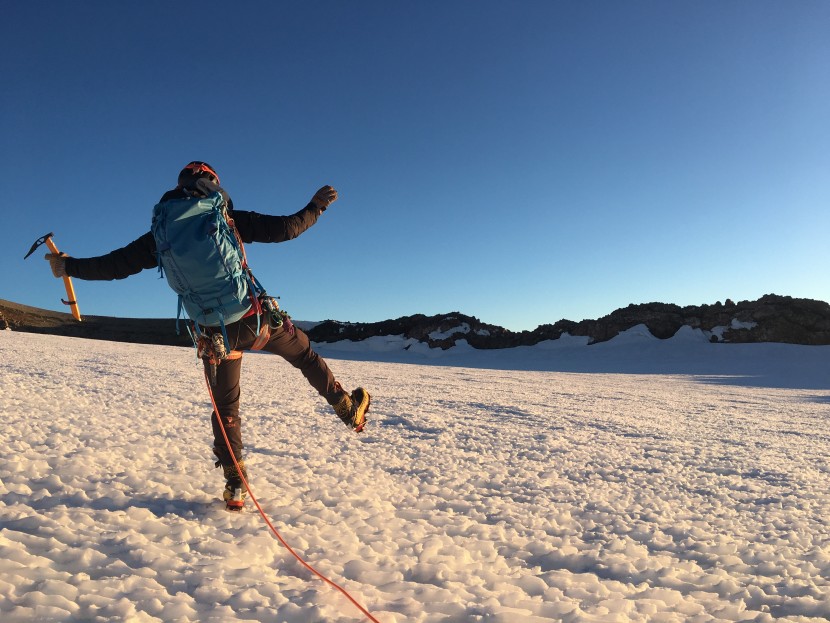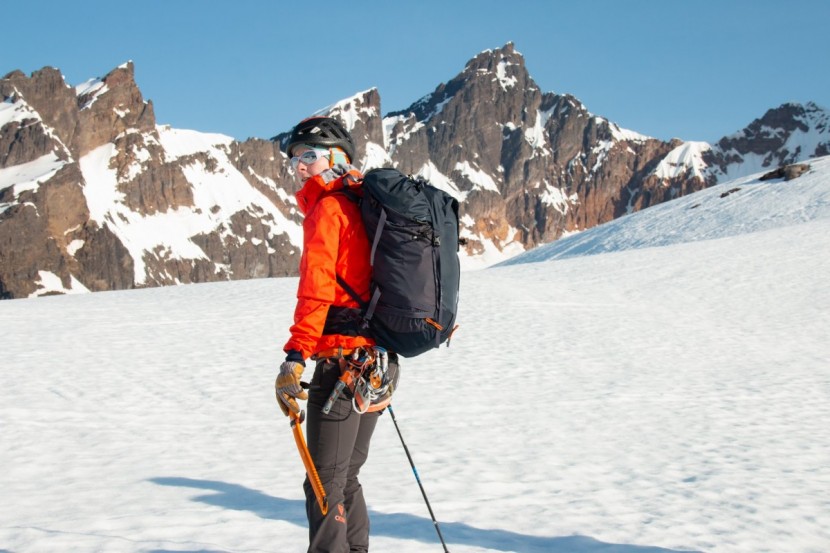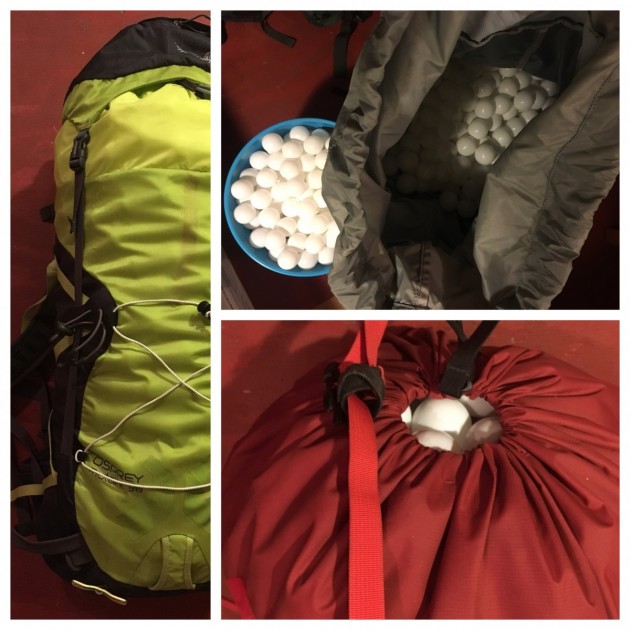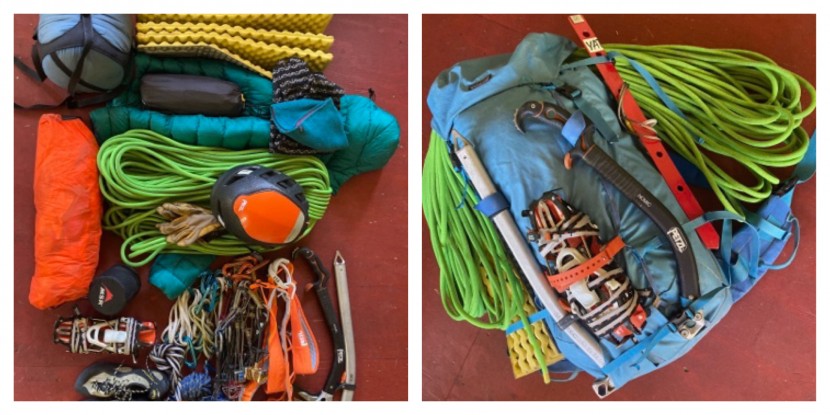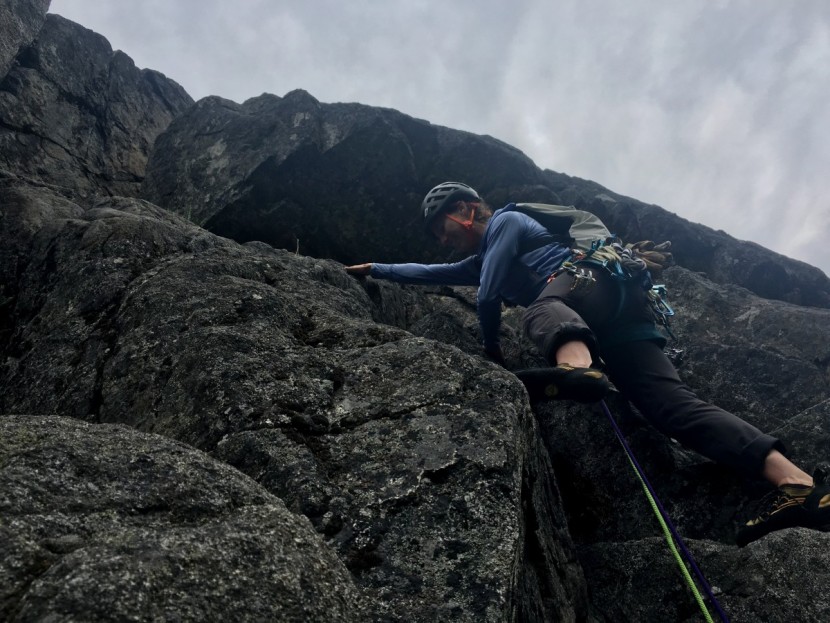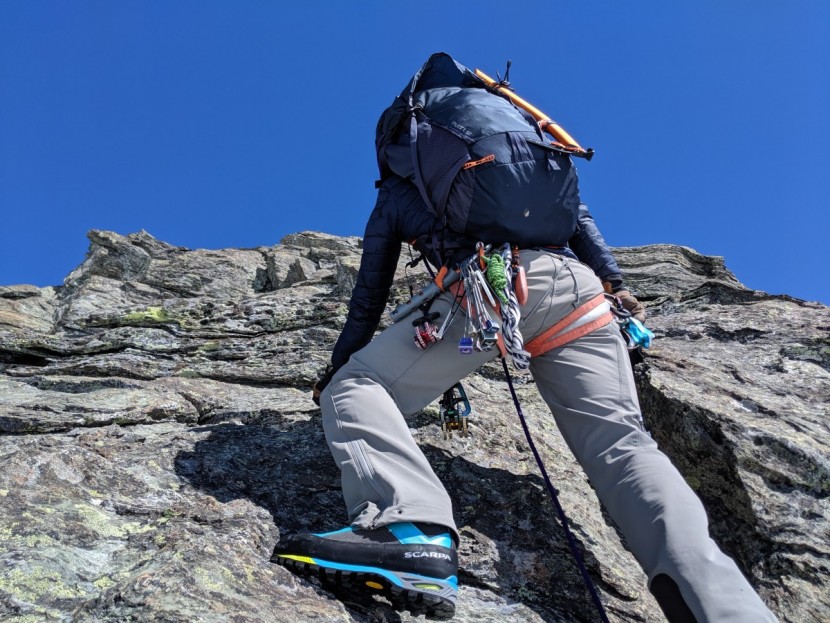Versatility
For this review, we tested different types and volumes of mountaineering backpacks, so we assessed each not only in comparison to others but also relative to the pack's intended use. This means we were careful not to be too rigid in our scoring — for example, a pack designed for comfort on route would not be penalized for being less comfortable when inappropriately overloaded for a 3-day mountaineering objective. Rather, each pack was assessed for comfort in the terrain for which it was designed.
Our crew of testers climbed all over the world with these mountaineering backpacks. Starting in North America, we scraped them around the North Cascades of Washington State, then ventured into the Sierra Nevada of California and even the desert southwest. We hit Bozeman and the White Mountains back east for ice climbing before heading north to the Canadian Rockies and the Alaska Range. We climbed through all four seasons, taking them on trips from multi-pitch rock climbs on big granite faces to steep waterfall ice climbing. We also used them for winter and spring ski tours and bigger ski mountaineering objectives.
In addition to our testing, we polled a variety of alpine climbers in different areas, asking them what they look for in an alpine or mountaineering backpack — and which models made them willing to part with their precious dirtbag dollars. And in our communities of mountain professionals and guides, we asked questions and watched intently to see what packs they were toting around the hills.
Weight to Volume Ratio
As fun as it is to test packs in the field, playing in the mountains was only half of our testing methodology. Weight, volume, and the relationship between them are the most important parts of the quantitative side of our test. We measured weight with a digital hanging scale. Measuring volume is not so straightforward. We noticed that even packs with the same claimed volume did not seem the same size or fit the same amount of gear. We decided to test all of the packs ourselves to see how they all compare in volume.
ASTM International (American Society for Testing and Materials) creates standards for a mind-boggling array of materials, consumer products, and systems. The device you are viewing this on probably conforms to some ASTM standards. Standard F-2153 provides the “Standard Test Method For Measurement Of Backpack Capacity.” Many manufacturers use this method to measure volume. The technique involves filling the pack with small plastic balls, then measuring the volume of those balls. The standard dictates everything about the test, from the size of the balls (15 to 20mm) to what parts of the pack can and cannot be filled with balls and when.
Our testing method is inspired by the standard but does not adhere to it exactly. For one, we used ping-pong balls, which are 40mm in diameter. They are easier to obtain, a more common object for our readers to recognize, and now we have enough balls to play ping-pong for the rest of our lives. Second, and more importantly, we filled the packs the way the climbing public might in real life, not in an arbitrary way.
We measured only the main compartment in this test to better compare across similar types of backpacks. Some manufacturers report volume including pockets and the lid; others don't. We hope this method will help normalize the packs across this review. Additionally, some packs did not have any pockets or a lid, so excluding them made it easier to compare and contrast.
See the comparison matrix at the top of our main review for the complete results of our pack volume measurement.
But how do we translate this objective data into what a user wants to know? Will this backpack fit all of my stuff? We also conduct a more realistic basic packing test with a sample alpine climbing kit. We made a pile of gear for a weekend adventure in the mountains in the summer. We then crammed this pile of gear into each pack, trying to get as much of it inside the pack as possible.
Comfort
For this review, we consulted with a climber and physical therapist to learn about proper fit and posture. Backpacks can be cumbersome, and we know how strongly we feel about one that climbs well — but we were curious, just what is it that makes one pack climb better than another?
With a newfound fluency in speaking about the fit of a backpack, we put each pack on our back in steep, technical terrain and figured out how the design translated to performance. For climbers accustomed to carrying backpacks, with all the right postural muscles appropriately strengthened, this often means that less suspension is better — a flat and firm but flexible back panel molds easily to your back, staying close when you're pulling technical moves. And with good packing strategies, you can still pack these backpacks comfortably when stuffed for the approach to basecamp.
Durability
Scoring for durability is a result of research and field testing. We put these packs through their paces on a variety of mountaineering adventures, being sure to expose them to our sharp crampons and ice tools, carrying skis, stuffing them to the brim, and hauling them up craggy alpine rock routes. Abrasion often proves to be the most challenging form of abuse for the lightweight materials used in mountaineering packs.
To ensure we didn't miss an opportunity to find a potential durability issue, we also researched the materials used in each pack. More durable materials will have a higher denier rating. But not all fabrics are reported using the denier number, so it required more digging to understand the technology (often an interesting sandwich of laminates and face fabrics). We factored in the durability of fabrics in each pack when assigning a final score.
Features
A mountaineering pack needs to be versatile, lightweight, and durable. To balance all of this, the careful selection of features to include or exclude is critical. Some pack manufacturers go bananas on features, thinking that more is better — but this sport is more like golf when it comes to being better. Doing more with less is the sweet spot for features in a mountaineering pack. We tested each pack in the field and with our Test Load to see if they could carry all of our tools for the mountain environment and then assessed how well they did.
Related: How to Choose a Mountaineering and Alpine Climbing Backpack

